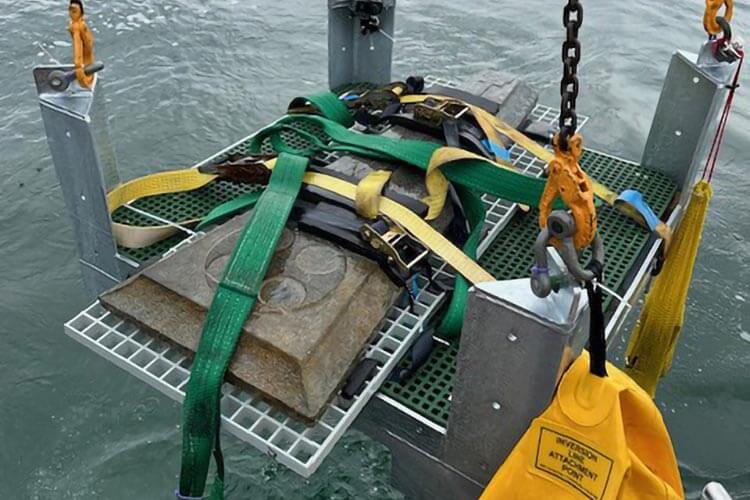
Maritime archaeologists from Bournemouth University have recovered two medieval grave slabs from the remains of the 13th Century Mortar Wreck, the oldest known shipwreck in British waters.
Located in the Swash Channel on the approach to Poole Harbour off the coast of Dorset, England, the site of the wreck was first noted as far back as 1982, but was assumed to be nothing more than a pile of rubble.
The wreck itself was discovered in 2019 by Trevor Small of Rocket Charters, after his dive boat’s scanner picked up an unusual reading from the sea floor; a subsequent site survey by Bournemouth University divers revealed the wreck’s unique archaeological significance.
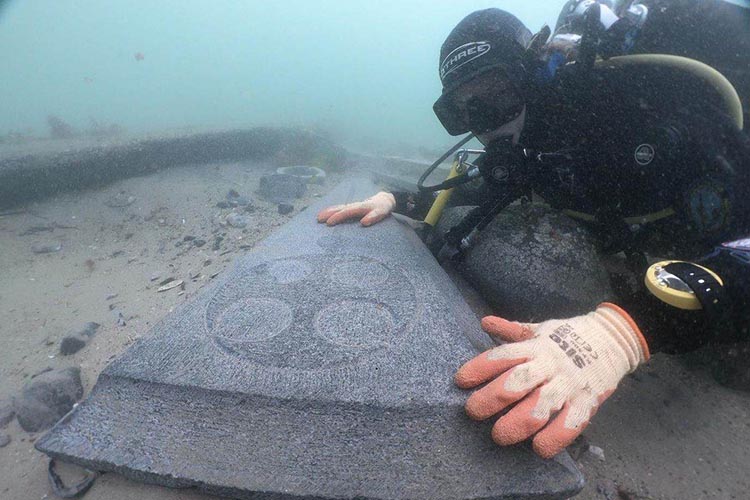
The ship – a design made from overlapping planks of wood known as a ‘clinker’ – was carrying a large number of grinding mortars – large stone wheels for grinding flour – made from Purbeck marble, a hard form of limestone quarried from the nearby Isle of Purbeck. The ship’s timbers were dated to between 1242 and 1265, meaning it would have sunk during the reign of Henry III, King of England from 1216 to 1272.
The two large gravestone slabs, also made from Purbeck marble, were found at a depth of around 7m in a remarkable state of preservation. One immaculately preserved slab measures 1.5m in length and weighs an estimated 70kg, while a second, larger slab is broken into two pieces with a combined length of 2m and a weight of around 200kg.
Related articles:
- Mortar wreck: dive skipper discovers rare 13th-century find
- Montenegro’s new Laboratory of Maritime Archaeology
- Search for missing German U-boat to be revealed in BBC documentary
- Wreck of Shackleton’s Endurance to be protected
- Wreck of 18th-Century warship HMS Tyger identified in Florida Keys
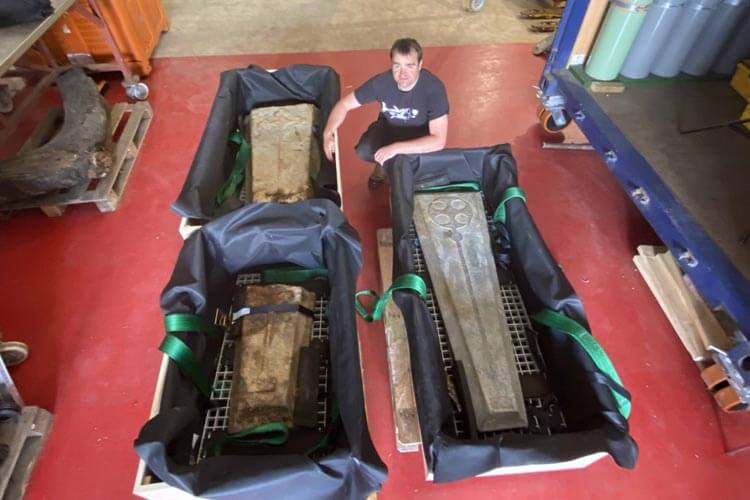
Divers and archaeologists brought the slabs to the surface on 4 June 2024 in a two-hour operation led by Tom Cousins, a Maritime Archaeologist at Bournemouth University.
The slabs will now be desalinated and conserved by the Bournemouth team until they can be put on public display along with the other recovered artefacts in Poole Museum’s new Shipwreck Gallery, expected to open in Spring 2025 following the museum’s £4.3m redevelopment.
The recovery of the gravestones, together with other artefacts such as the mortars, smaller stone vessels and cauldrons, will enable the researchers to learn more about 13th-century life and the ancient craft of stonemasonry.
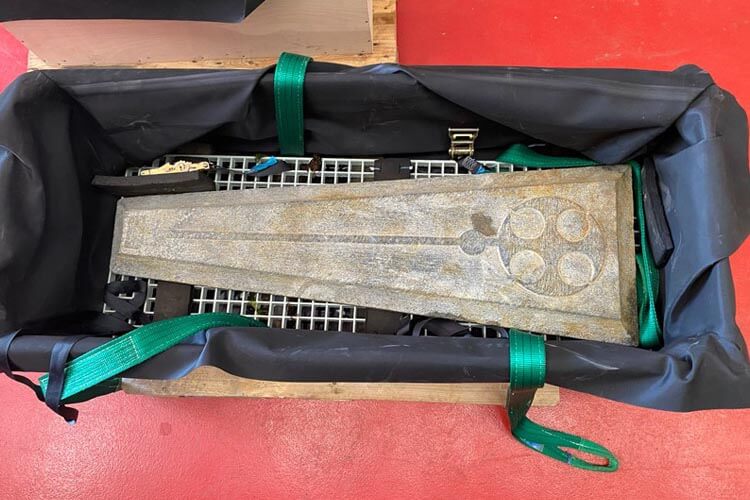
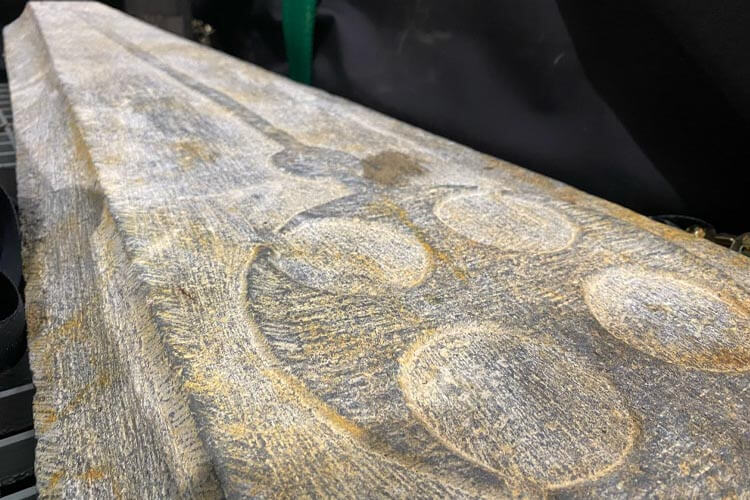
‘The wreck went down in the height of the Purbeck stone industry and the grave slabs we have here were a very popular monument for bishops and archbishops across all the cathedrals and monasteries in England at the time,’ said Cousins. ‘Examples have been found in Westminster Abbey, Canterbury Cathedral and Salisbury Cathedral.
‘Although Purbeck marble was quarried near Corfe Castle there has always been a debate about how much work was done here and how much was done in London,’ Cousins added. ‘Now we know they were definitely carving them here, but they hadn’t been polished into the usual shiny finish at the time they sank so there is still more we can learn.’
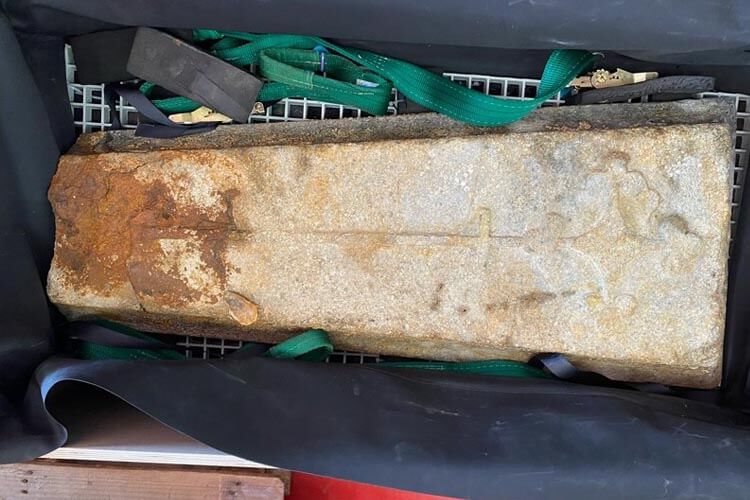
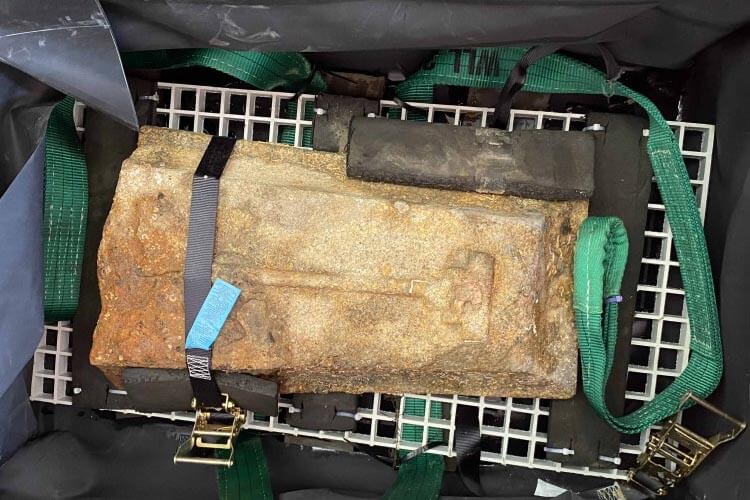
The team will continue to explore and protect the wreck over the coming years, and hope to include an operation to record the timber frames of the ship’s hull which are still well preserved in the sand. Cousins says he is also planning to use this as a training opportunity for his students at the university.
‘The future aim of the project is to train the next generation so that they get the same opportunities I had,’ said Cousins. ‘We’ve already started teaching our second-year students to dive and as they get into the third year we’re going to take them out to sea and teach them their first steps to becoming maritime archaeologists.’


